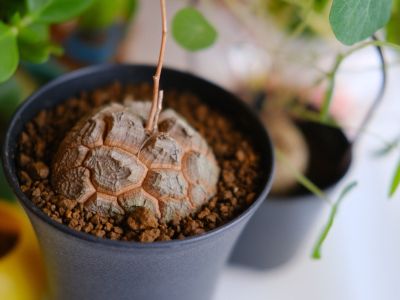Tortoise Plant Info
Attractive, heart-shaped vines grow from the corky bark of the tortoise plant. The starchy tuber, which is partially buried, grows slowly; however, in time, the tuber can reach heights of more than 3 feet (1 m.) and width of up to 10 feet (3 m.). With proper care, the tortoise plant can live as long as 70 years. Native to South Africa, the tortoise plant is drought-tolerant and does fine in extreme heat. The plant may survive a frost but a hard freeze is likely to kill it. If you decide to try your hand at growing this fascinating plant, be sure to ask for the plant by its scientific name – Dioscorea elephantipes. The Dioscorea genus includes other unique plants such as Chinese yam, air potato, and water yam.
How to Grow Tortoise Plants
In most climates, tortoise plants are grown as indoor plants, and the plant is relatively easy to grow from seed. The roots aren’t deep, so plant tortoise plant in a shallow pot filled with a porous, well-drained potting mix. Water the plant around the edges of the pot and not directly on the tuber. Allow the soil to become nearly dry before watering again. Tortoise plant care is simple. Feed the plant with a very dilute (25 percent of normal) fertilizer with each watering. Withhold fertilizer and water sparingly during the plant’s dormant period – when the vines turn yellow and die back. Plants often go dormant during the summer, but there is no set pattern or time schedule. If the vine dries up completely during dormancy, move the plant to a cool place and withhold water completely for about two weeks, then return it to the sunny location and resume normal care. If you grow a tortoise plant outdoors, place it in sandy soil amended with rich, well-rotted compost. Be careful not to overwater.
